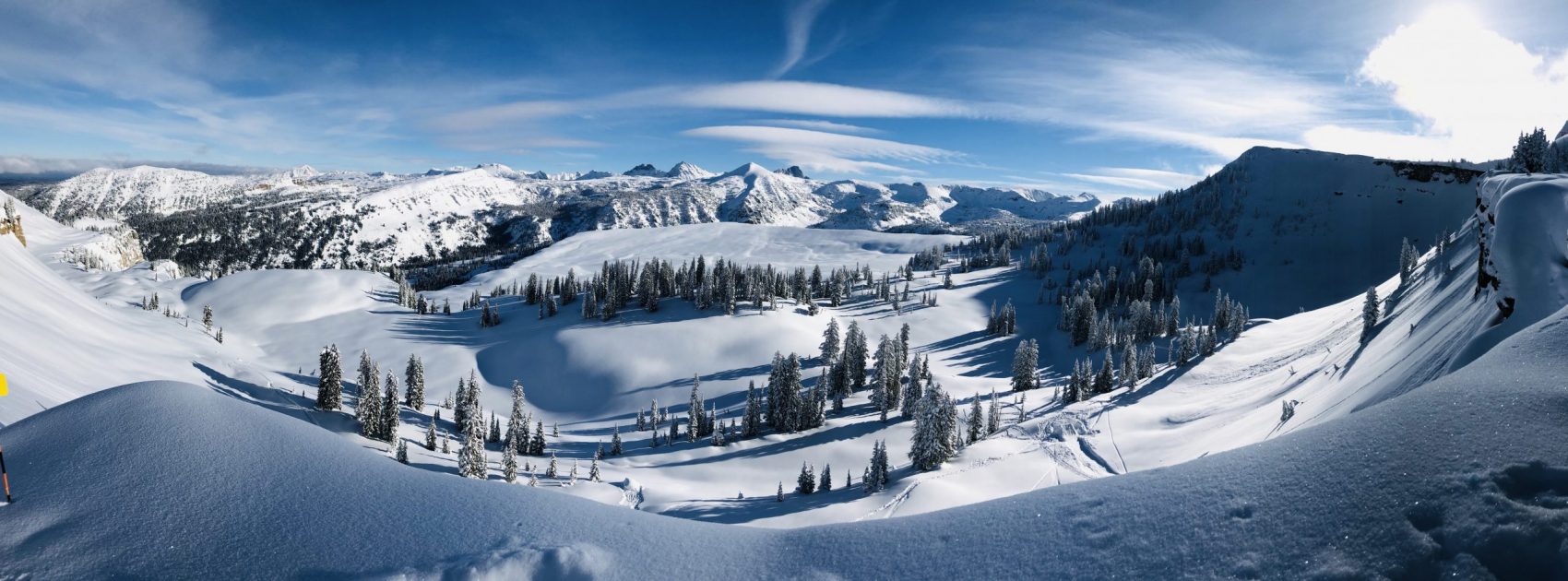
In the world of recreation accessories, there are options a’plenty—especially when it comes to soft goods. But in the end it all strips down to a core. That ‘Elemental’ base is where the Japanese company finetrack makes its mark.
Rather than Capilene, Thermalwear or even Merino, finetrack’s ‘Elemental Layer’ aims to bring the game as close to zero as possible.

Born of a basic goal to create reliable products for authentic experiences, finetrack is a roots-approach offshoot of Japan’s big-business textile industry. It was trade-off of boardroom for garage, with an understanding to not look back—Elemental Layer was the result. Nearly two decades later, this once jump-start brand has leapt the Pacific and is making waving among the North America snow scene.
The blueprint to finetrack North America follows the stitch of its Ja-Pow-based parent; redefine the traditional three-layer dynamic, starting with its flagship ‘Elemental Layer,’ manufactured into upper or lower torso garments.

“It works as a shield between your skin and a baselayer, keeping you dry,” says Kazu Shibata, Owner of Zephyr Outdoors and sole distributor of finetrack in North America.
“Stay dry; retain heat.” Zero bells or whistles.
The material is water repellent. Worn tight against the skin, it’s a cooperative middleman between dry, hopefully warm human tissue and a base layer which may itself become wet while doing the job wicking moisture perspired by the wearer.

According to Kazu, textile development and manufacturing technology is finetrack‘s biggest strength. What makes Elemental layer unique is the company’s angle that the product category doesn’t exist yet.
“Outdoor gear makers (including finetrack) have been trying to develop the best and fastest drying base layers for a long time,” Kazu said. “High-performance textiles and materials technology may have come a long way, with plenty of awesome base layers on the market, but it still takes a good amount of time for them to dry completely.”
“Drying time is the window when back chill and body temperature loss become a factor.”

The porous, 100% polyester Elemental Layer is engineered to preserve the athlete’s body heat during the approximate hour that a traditional base layer material requires to dry properly. That stop-gap design equates to outdoor experiences that are all the more epic and most importantly, safer.
And attention upon finetrack technology is already growing at the upper echelons of snowsport.

“I first tried Elemental Layer on the face check at Hakuba in Jan, during Freeride World Tour 2020,” said standout male skier athlete Yu Sasaki. “I hiked up to the ridge and was really surprised how dry my back felt even when I was sweating.”
“It kept me so dry I decided to use it on competition day, and kept on using it when in Canada and Europe.”
“It might take some time for people to understand how it works,” Yu said. “But I’m sure people will be surprised when they try it.”

Regarding testing the product, the first impression indeed is likely to be a raised eyebrow. Elemental Layer is light, almost flimsy, and very porous. It is very dry against the skin, almost scratchy. In fact, for an athlete accustomed to mainstream base layering, the feel of Elemental Layer directly against the skin requires some getting used to. But the result is undeniable; not a particle of moisture makes it through, and as delicate thin as finetrack is, the support it provides is as heavy-duty.

Also remarkable during the field test by SnowBrains: how the garment stood up to repeated long days of prolonged use. The Material molds to the wearer, doesn’t shift or scrunch, and maintains performance levels while remaining reasonably “fragrance” free. For recreationists familiar with battling the inevitable onset of BO, finetrack is an appreciated ally.
“Elemental layer, because of its water repellency, has antibacterial properties and deodorant effect,” Kazu adds. “The idea is when the fabric is dry it inhibits growth of odor-producing bacteria.”
Kazu went on to explain that finetrack explores outdoor activities with an aim to find and solve many modern challenges in gear tech, not just by improving existing products, but by thinking differently and conceptually re-envisioning ideas or practices.
“The guys at finetrack are the ultimate end-users,” Kazu said. “It just happens that they also have extensive knowledge in material engineering and manufacturing.”

So what’s next? For finetrack, the answer loops back upon itself. Since Elemental Layer is a unique product upon the market, the company anticipates a certain level of critique. First of all, Polyester has been around a long time. However, knitting it as a rugged yet lightweight skin-thin porous shirt featuring Durable Water Repellent [DWR] finish is new. And while there are more than enough base layers lying around to swap into or out of, the aim of Elemental Layer is to eliminate that process.
“finetrack tested many other materials or blends of materials,” Kazu said, “and DWR finish on knit fabric like Elemental layer was a huge challenge to overcome, yet it is this water repellency–combined with ultra-thin and light-knit technology–which brought Elemental Layer first to the Japanese and now the North America the market.”

“Elemental layer helped me improve my competition performance by retaining my body heat and energy from the start, which is really important if hoping to perform 100%” Yu adds. “This idea of wearing water repellent mesh as the first layer, combined with a high-performance base layer, is the “next thing.”
All techno-manufacturing aside, at its core, the finetrack concept is simplicity…via athletic rigor. And the end result is an arrival to where athletes often feel at home: in wild lands, dry and confident, zeroing-in on new horizons of personal performance.
Meaningless sponsored drivel.